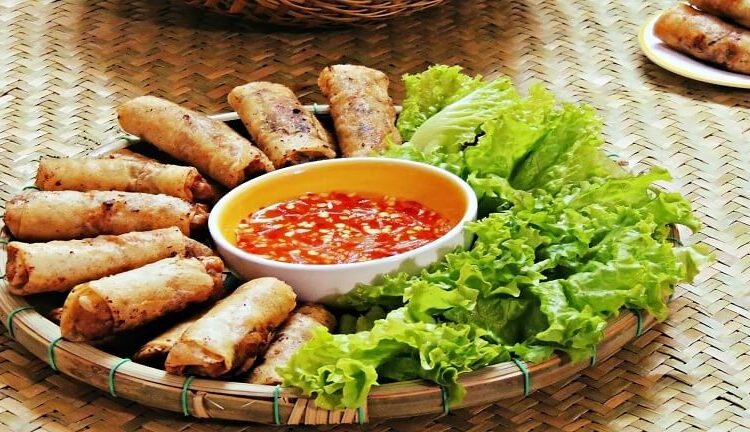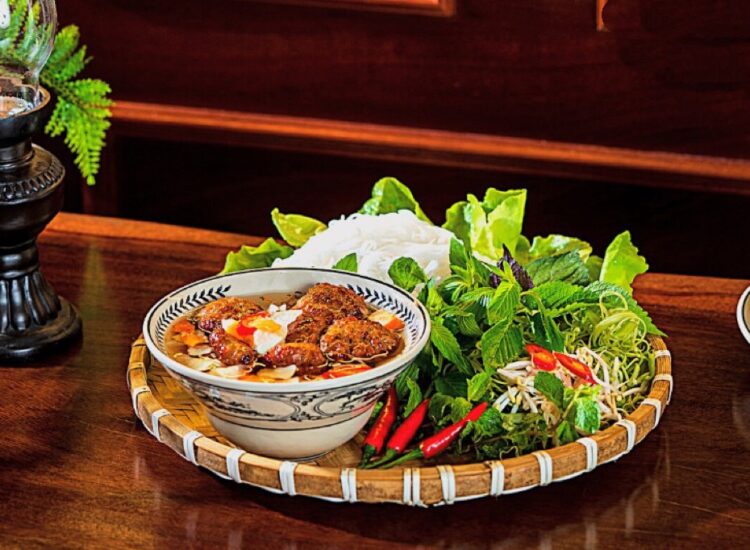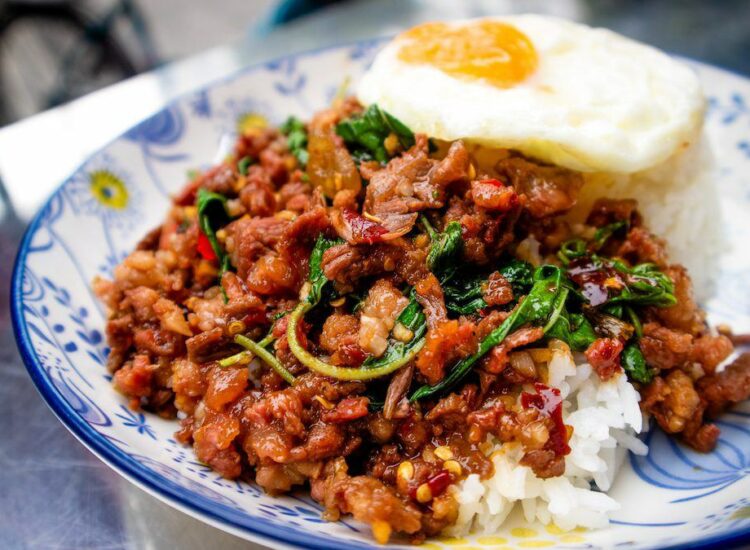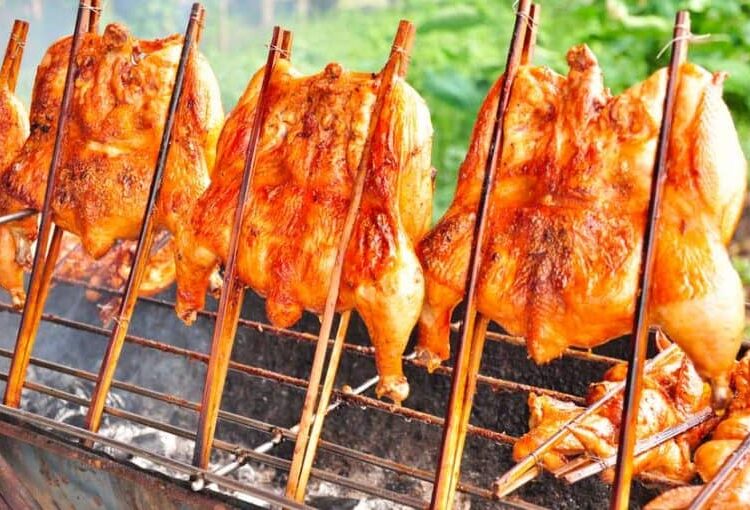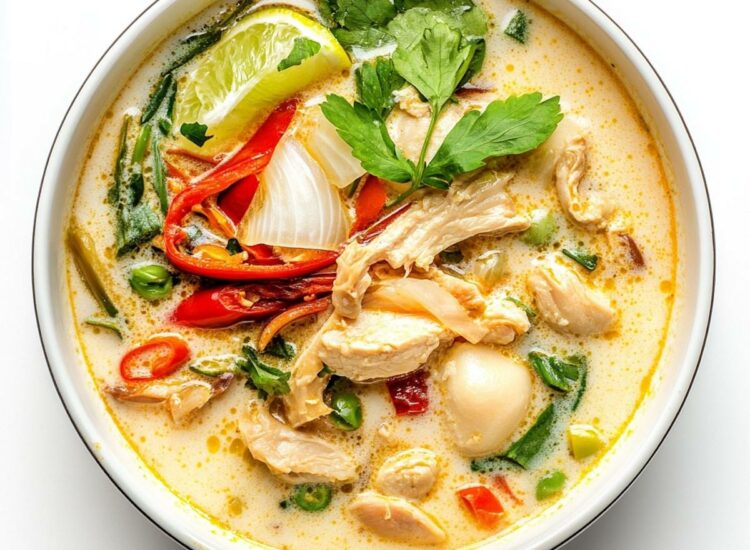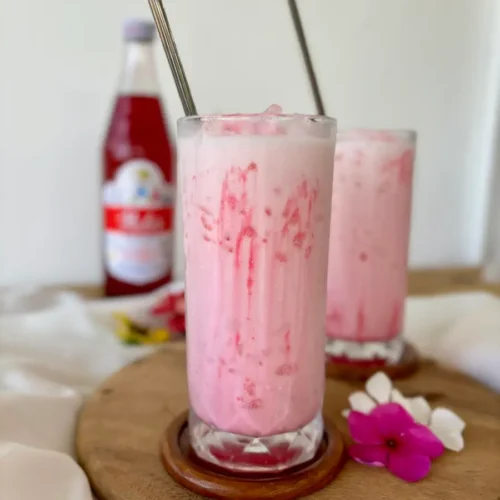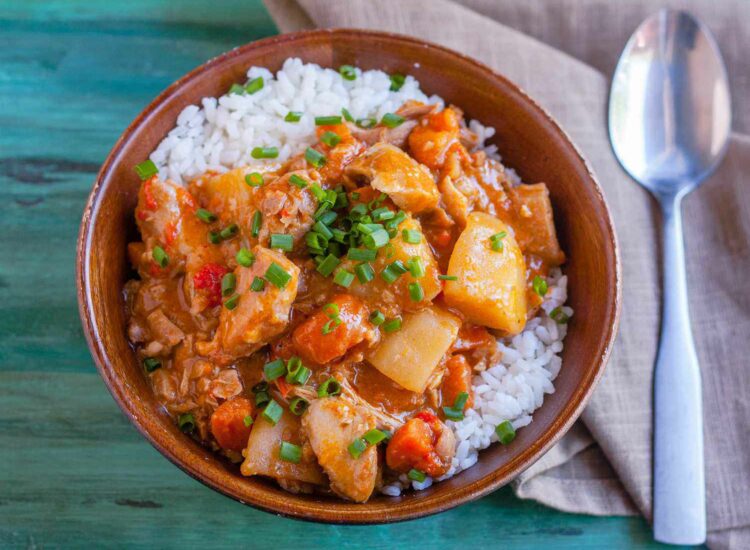Khao Soi, a dish that resonates with the soul of Northern Thailand, is more than just a noodle soup; it’s a culinary tapestry woven with history, culture, and a symphony of flavors. This iconic dish, deeply rooted in the Lanna Kingdom, is a must-try for anyone venturing into the northern regions of Thailand, particularly Chiang Mai. Khao Soi offers a unique gastronomic experience, blending the creamy richness of coconut milk curry with the satisfying crunch of crispy noodles, creating a textural and flavorful masterpiece that has captivated locals and travelers alike for generations.

A Dish with a Rich History and Cultural Heritage
The origins of Khao Soi are shrouded in a delightful culinary mystery, with theories pointing towards influences from both Burmese and Chinese cuisines. The most prevalent narrative suggests that Khao Soi was brought to Northern Thailand by Muslim-Chinese traders from Yunnan, who traversed the ancient caravan routes. This theory is supported by the presence of similar dishes in Yunnan and neighboring regions, which share characteristics with Khao Soi, particularly in the use of wheat noodles and a rich, spiced broth.
The name “Khao Soi” itself offers a clue to its possible Chinese connection. “Khao” means rice or noodles in Thai, while “Soi” is believed to be derived from the Shan word for noodles, or potentially a corruption of the Chinese words “Kao Shwe,” referring to wheat noodles. This linguistic link further strengthens the theory of Chinese Muslim influence on the dish’s development.
Regardless of its precise origins, Khao Soi has been embraced and adapted by the people of Northern Thailand, evolving into a dish that is distinctly Lanna. It is a testament to the region’s history as a crossroads of cultures, where culinary traditions have blended and transformed over time to create something uniquely special. Khao Soi is not just food; it’s a symbol of Northern Thai identity, reflecting the region’s diverse heritage and culinary ingenuity.
The Symphony of Ingredients: Building the Khao Soi Experience
Khao Soi is a meticulously constructed dish, where each ingredient plays a crucial role in creating its signature taste and texture. The magic of Khao Soi lies in the harmonious blend of contrasting elements: soft and crispy noodles, creamy and spicy broth, and a medley of aromatic toppings.
The Noodles: A Tale of Two Textures
At the heart of Khao Soi are the egg noodles, which are prepared in a distinctive two-part manner. Part of the egg noodles are boiled to a tender, slightly chewy consistency, forming the base of the soup. The remaining noodles are deep-fried until golden brown and irresistibly crispy, becoming a crucial topping that adds a delightful crunch to each spoonful. This dual texture of soft and crispy noodles is a defining characteristic of Khao Soi, setting it apart from other noodle soups.
The Curry Broth: Aromatic and Creamy Complexity
Related articles 01:
1. https://chobangkaewthai.com/oliang-thai-coffee-you-shouldnt-miss
2. https://chobangkaewthai.com/a-journey-through-time-unraveling-the-history-of-massaman-curry
3. https://chobangkaewthai.com/cha-yen-delicious-drinks-from-tea-leaves
4. https://chobangkaewthai.com/penang-curry
5. https://chobangkaewthai.com/nem-ran-cha-gio-tinh-hoa-am-thuc-viet-nam-vuon-tam-the-gioi
The broth of Khao Soi is where the dish truly shines, embodying the rich and aromatic flavors of Northern Thai cuisine. It is a coconut milk-based curry, simmered to creamy perfection and infused with a complex blend of spices and herbs. The foundation of the broth is a fragrant curry paste, typically made from dried chilies, galangal, lemongrass, kaffir lime leaves, shallots, garlic, and coriander root. These ingredients are pounded together to create a paste that is both spicy and aromatic, forming the flavor base of the curry.
Coconut milk is the soul of the Khao Soi broth, lending it a luxurious creaminess and subtle sweetness that balances the spice of the curry paste. The broth is further enriched with meat stock, often chicken or beef, which adds depth and savory notes. Turmeric is another key ingredient, contributing its vibrant yellow color and earthy, slightly bitter flavor. Soy sauce and fish sauce are used to season the broth, adding umami and saltiness. Palm sugar provides a touch of sweetness, rounding out the overall flavor profile.
Protein: Hearty and Flavorful Choices
Traditionally, Khao Soi is served with chicken or beef as the protein component. Chicken Khao Soi often features tender, bone-in chicken pieces, simmered in the broth until succulent and infused with the curry flavors. Beef Khao Soi typically uses braised beef, which is cooked until incredibly tender and flavorful, offering a richer and more robust taste. Pork is also a popular protein choice in some variations, adding its own unique flavor dimension to the dish.
For vegetarian adaptations, tofu or mushrooms can be used as protein substitutes, offering a satisfying and equally flavorful vegetarian Khao Soi experience.
Toppings: The Finishing Touches of Flavor and Texture
No bowl of Khao Soi is complete without its signature toppings, which are essential for adding layers of flavor and texture. These toppings are typically presented as condiments on the table, allowing diners to customize their bowl to their preference.

- Shallots: Thinly sliced shallots, either raw or fried, provide a pungent and slightly sweet oniony flavor, adding freshness and aroma.
- Pickled Mustard Greens: These fermented greens, known as “pak gat dong” in Thai, offer a tangy, slightly sour, and crunchy counterpoint to the richness of the broth. They are a quintessential topping for Khao Soi, adding a unique fermented flavor that is integral to the dish’s character.
- Lime Wedge: A squeeze of fresh lime juice brightens the flavors of the Khao Soi, adding acidity and a citrusy zest that cuts through the richness of the coconut milk.
- Chili Oil: A spoonful of chili oil, often infused with dried chilies and garlic, provides an extra kick of heat and adds a smoky depth to the dish for those who prefer a spicier experience.
Crafting Khao Soi: The Art of Preparation
Making Khao Soi is a labor of love, requiring time and attention to detail to achieve the perfect balance of flavors and textures. The preparation process can be broken down into several key steps:
- Making the Curry Paste: The curry paste is the heart and soul of Khao Soi. Fresh ingredients like dried chilies, galangal, lemongrass, kaffir lime leaves, shallots, garlic, coriander root, and spices are meticulously pounded together using a mortar and pestle to create a fragrant and flavorful paste. Some recipes may use pre-made curry paste to simplify the process, but homemade paste is often considered superior in flavor.
- Preparing the Broth: The curry paste is stir-fried in coconut oil until fragrant, releasing its aromatic oils. Coconut milk is then added, followed by meat stock, turmeric powder, soy sauce, fish sauce, and palm sugar. The broth is simmered gently for an extended period, allowing the flavors to meld and deepen. The protein, such as chicken or beef, is added to the broth and simmered until tender and flavorful.
- Cooking the Noodles: Egg noodles are cooked separately. A portion is boiled until tender and drained. Another portion is deep-fried until golden brown and crispy.
- Assembling the Khao Soi: To assemble a bowl of Khao Soi, boiled egg noodles are placed in a bowl, followed by a generous ladle of the coconut milk curry broth with the chosen protein. The dish is then garnished with crispy fried noodles, sliced shallots, pickled mustard greens, and a lime wedge. Chili oil is typically served on the side for those who desire extra heat.
Regional Variations: A Taste of Local Flavors
While Khao Soi is primarily associated with Northern Thailand, variations of the dish can be found across the region and even in neighboring countries. Within Northern Thailand itself, subtle regional differences exist, reflecting local preferences and ingredients.
Related articles 02:
1. https://chobangkaewthai.com/penang-curry
2. https://chobangkaewthai.com/oliang-thai-coffee-you-shouldnt-miss
4. https://chobangkaewthai.com/tom-kha-gai-unveiling-the-aromatic-symphony-of-thai-coconut-chicken-soup
5. https://chobangkaewthai.com/nom-yen-a-refreshing-drink-not-to-be-missed
- Chiang Mai Khao Soi: Chiang Mai, the cultural heart of Northern Thailand, is considered the epicenter of Khao Soi. Chiang Mai-style Khao Soi is often characterized by its rich and creamy broth, generous use of coconut milk, and a slightly sweeter flavor profile. Chicken and beef are the most common protein choices.
- Chiang Rai Khao Soi: In Chiang Rai, another major city in Northern Thailand, Khao Soi tends to be spicier and less sweet than its Chiang Mai counterpart. Pork is a more prevalent protein option in Chiang Rai.
- Lampang Khao Soi: Lampang, a province south of Chiang Mai, offers a unique variation of Khao Soi known as “Khao Soi Mae Sai.” This version is distinguished by its use of fermented soybeans (thua nao) in the curry paste, adding a distinctive umami flavor.
Beyond Thailand, similar noodle dishes can be found in Burma (Myanmar) and Laos, reflecting the shared culinary heritage of the region. These dishes, while sharing similarities with Khao Soi, often have their own distinct characteristics in terms of spice levels, ingredients, and preparation methods.
Khao Soi in Northern Thai Culture: More Than Just a Meal
Khao Soi is deeply ingrained in Northern Thai culture, transcending its status as just a meal. It is a dish that is enjoyed throughout the day, from breakfast to dinner, and is a staple in both homes and restaurants. Khao Soi is not only a popular everyday food but also holds a special place in celebrations and gatherings. It is often served at festivals, temple fairs, and family events, symbolizing hospitality and culinary tradition.
The act of eating Khao Soi is itself a cultural experience. It is typically enjoyed leisurely, with diners savoring each component and customizing their bowl with the provided toppings. The communal aspect of sharing a meal of Khao Soi is also significant, fostering social connection and togetherness.
Finding Authentic Khao Soi: A Culinary Quest
For those seeking an authentic Khao Soi experience, Northern Thailand, particularly Chiang Mai, is the ultimate destination. Khao Soi is ubiquitous in Chiang Mai, found everywhere from upscale restaurants to humble street food stalls and bustling markets.
- Restaurants: Many restaurants in Chiang Mai, ranging from casual eateries to fine dining establishments, specialize in Khao Soi. These restaurants often offer various protein options and may have their own unique twists on the classic recipe.
- Street Food Stalls: For a truly local experience, street food stalls are the way to go. Khao Soi vendors can be found throughout Chiang Mai, especially in the old city and around markets. These stalls often serve up delicious and affordable Khao Soi, cooked with recipes passed down through generations.
- Markets: Local markets, such as Warorot Market (Kad Luang) in Chiang Mai, are excellent places to find Khao Soi. Many food vendors within the markets offer Khao Soi alongside other Northern Thai specialties.
Beyond Northern Thailand, Khao Soi has gained international recognition and can be found in Thai restaurants around the world. However, for the most authentic and flavorful Khao Soi experience, a trip to Northern Thailand is highly recommended.
Conclusion: The Enduring Allure of Khao Soi
Khao Soi is more than just a noodle soup; it is a culinary emblem of Northern Thailand, a dish that embodies the region’s rich history, diverse cultural influences, and unique flavor profile. Its captivating blend of creamy coconut milk curry, tender and crispy noodles, and aromatic toppings creates a symphony of textures and tastes that is both comforting and exhilarating. Whether enjoyed at a bustling street food stall in Chiang Mai or a refined restaurant, Khao Soi offers a culinary journey that is deeply satisfying and unforgettable, solidifying its place as a beloved and iconic dish of Thailand.

